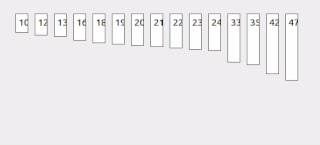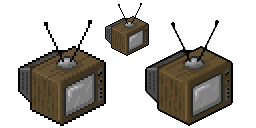Related Research Articles

Gouraud shading, named after Henri Gouraud, is an interpolation method used in computer graphics to produce continuous shading of surfaces represented by polygon meshes. In practice, Gouraud shading is most often used to achieve continuous lighting on triangle meshes by computing the lighting at the corners of each triangle and linearly interpolating the resulting colours for each pixel covered by the triangle. Gouraud first published the technique in 1971.

Fractal compression is a lossy compression method for digital images, based on fractals. The method is best suited for textures and natural images, relying on the fact that parts of an image often resemble other parts of the same image. Fractal algorithms convert these parts into mathematical data called "fractal codes" which are used to recreate the encoded image.

Interpolation search is an algorithm for searching for a key in an array that has been ordered by numerical values assigned to the keys. It was first described by W. W. Peterson in 1957. Interpolation search resembles the method by which people search a telephone directory for a name : in each step the algorithm calculates where in the remaining search space the sought item might be, based on the key values at the bounds of the search space and the value of the sought key, usually via a linear interpolation. The key value actually found at this estimated position is then compared to the key value being sought. If it is not equal, then depending on the comparison, the remaining search space is reduced to the part before or after the estimated position. This method will only work if calculations on the size of differences between key values are sensible.
In mathematics and computing, a root-finding algorithm is an algorithm for finding zeros, also called "roots", of continuous functions. A zero of a function f, from the real numbers to real numbers or from the complex numbers to the complex numbers, is a number x such that f(x) = 0. As, generally, the zeros of a function cannot be computed exactly nor expressed in closed form, root-finding algorithms provide approximations to zeros, expressed either as floating-point numbers or as small isolating intervals, or disks for complex roots (an interval or disk output being equivalent to an approximate output together with an error bound).

In mathematics, linear interpolation is a method of curve fitting using linear polynomials to construct new data points within the range of a discrete set of known data points.

In 3D computer graphics, Phong shading, Phong interpolation, or normal-vector interpolation shading is an interpolation technique for surface shading invented by computer graphics pioneer Bui Tuong Phong. Phong shading interpolates surface normals across rasterized polygons and computes pixel colors based on the interpolated normals and a reflection model. Phong shading may also refer to the specific combination of Phong interpolation and the Phong reflection model.
In numerical analysis, Brent's method is a hybrid root-finding algorithm combining the bisection method, the secant method and inverse quadratic interpolation. It has the reliability of bisection but it can be as quick as some of the less-reliable methods. The algorithm tries to use the potentially fast-converging secant method or inverse quadratic interpolation if possible, but it falls back to the more robust bisection method if necessary. Brent's method is due to Richard Brent and builds on an earlier algorithm by Theodorus Dekker. Consequently, the method is also known as the Brent–Dekker method.
In numerical analysis, inverse quadratic interpolation is a root-finding algorithm, meaning that it is an algorithm for solving equations of the form f(x) = 0. The idea is to use quadratic interpolation to approximate the inverse of f. This algorithm is rarely used on its own, but it is important because it forms part of the popular Brent's method.

Pixel-art scaling algorithms are graphical filters that enhance hand-drawn 2D pixel art graphics. The re-scaling of pixel art is a specialist sub-field of image rescaling.

Nearest-neighbor interpolation is a simple method of multivariate interpolation in one or more dimensions.

In computer graphics and digital imaging, imagescaling refers to the resizing of a digital image. In video technology, the magnification of digital material is known as upscaling or resolution enhancement.
A demosaicing algorithm is a digital image process used to reconstruct a full color image from the incomplete color samples output from an image sensor overlaid with a color filter array (CFA). It is also known as CFA interpolation or color reconstruction.
In mathematics, Neville's algorithm is an algorithm used for polynomial interpolation that was derived by the mathematician Eric Harold Neville in 1934. Given n + 1 points, there is a unique polynomial of degree ≤ n which goes through the given points. Neville's algorithm evaluates this polynomial.
In the context of live-action and computer animation, interpolation is inbetweening, or filling in frames between the key frames. It typically calculates the in-between frames through use of (usually) piecewise polynomial interpolation to draw images semi-automatically.
The term post-processing is used in the video/film business for quality-improvement image processing methods used in video playback devices, such as stand-alone DVD-Video players; video playing software; and transcoding software. It is also commonly used in real-time 3D rendering to add additional effects.
Peter Wynn (1931—2017) was an English mathematician. His main achievements concern approximation theory – in particular the theory of Padé approximants – and its application in numerical methods for improving the rate of convergence of sequences of real numbers.
This gallery shows the results of numerous image scaling algorithms.
Interpolation sort is a kind of bucket sort. It uses an interpolation formula to assign data to the bucket. A general interpolation formula is: